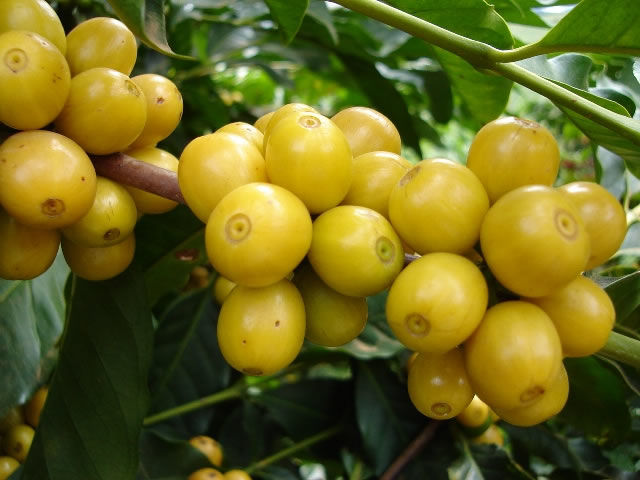Is the acid of coffee fruit acid or acetic acid? why should we identify these flavors?
Drinking coffee in a restaurant since childhood, no matter what the price or grade of coffee, will definitely be slightly bitter. Children have the most open taste buds and are mostly resistant to coffee. This is in fact the nature of animals; many poisons in nature, including caffeine, are bitter. Human tolerance for coffee bitterness stems largely from the pursuit of caffeine's refreshing effects. The real good coffee should not be the bitter the better, but to pursue a balance between sweet, sour and bitter.
Perhaps the image of vinegar is too deeply rooted in the hearts of the people. When someone mentions that specialty coffee can be sour, many people automatically choose something else immediately. In the English world, acid can be translated as "acidity," which means aromatic and refreshing; the negative word is of course "sour," which describes vinegar, expired milk and sour taste like spoiled fruit. High-quality coffee beans contain a lot of organic ingredients, roaster's job is to use different heat and time to separate, combine, assemble these ingredients. This chain reaction can produce as many as 800 substances that human senses can detect, compared to the 200-odd substances that have always been praised as complex red wine. Positive and negative acids may be just a fine line. In Central America, the author wrote down a cup of coffee as defective because it tasted like fermented bacon, but another judge at the same venue described it as "dangerous coffee" and gave it a high score. It can be seen that half-ripe bananas and plum blossom spots are all accompanied by guests. In this to find their favorite taste, and can intuitively describe to the barista, so as to get a cup of satisfactory coffee, is the purpose of our favorite description.
Fruity acetic acid dangerous temptation
In a cup of coffee, the quality of the acid is more important than its intensity; a glass of light lemonade is certainly more acceptable than concentrated vinegar! Ethiopia's Harra coffee is known for its berry flavor, while its yirgacheffe is dominated by floral and citrus acids. If coffee beans are sent for chemical analysis, citric acid, malic acid, and tartaric acid found in grapes are found. Fruity, no need to add, not out of thin air out of fantasy.
Limited quality, carbonization, destruction.
Instant coffee bought in supermarkets, in order to cover up the defects of cheap beans, manufacturers simply roast coffee beans to the extreme, burn all the organic matter in the beans into charcoal (charcoal), and then paste beautiful "charcoal coffee" packaging paper. In fact, it is not too much to call it "carbonized coffee".
If you have bought a packet of light roast coffee beans, but can not accept its acidity, can be from? Cooking method? Hand; the water temperature will be adjusted to high, grinding degree to fine, and extend the extraction time, are effective to reduce the acidity of coffee; but this method will lead to excessive extraction, affecting the balance of coffee flavor, it is a very means.

Important Notice :
前街咖啡 FrontStreet Coffee has moved to new addredd:
FrontStreet Coffee Address: 315,Donghua East Road,GuangZhou
Tel:020 38364473
- Prev

How should coffee lovers distinguish between "good coffee" and "bad coffee" on Taobao?
Communication of professional baristas Please pay attention to the coffee workshop (Wechat official account cafe_style) A good cup of coffee depends on good coffee beans, while the growth environment, climate, aroma, drying treatment and storage time of coffee beans all affect the quality of coffee. Coffee is a drink made from roasted coffee beans (seeds of coffee plants). It is usually a hot drink, but also
- Next

How to buy fresh coffee beans? Frequently asked questions on the purchase and daily preservation of coffee beans
Exchange of professional baristas Please follow the coffee workshop (Wechat official account cafe_style) preserved / PERSERVE coffee is a kind of agricultural products, fresh is one of the indispensable elements of good coffee. So how to choose and buy fresh coffee, and the problem often encountered by guests is how to preserve it, it has become a very important part. In this article, we would like to use some people to buy
Related
- Beginners will see the "Coffee pull flower" guide!
- What is the difference between ice blog purified milk and ordinary milk coffee?
- Why is the Philippines the largest producer of crops in Liberia?
- For coffee extraction, should the fine powder be retained?
- How does extracted espresso fill pressed powder? How much strength does it take to press the powder?
- How to make jasmine cold extract coffee? Is the jasmine + latte good?
- Will this little toy really make the coffee taste better? How does Lily Drip affect coffee extraction?
- Will the action of slapping the filter cup also affect coffee extraction?
- What's the difference between powder-to-water ratio and powder-to-liquid ratio?
- What is the Ethiopian local species? What does it have to do with Heirloom native species?

